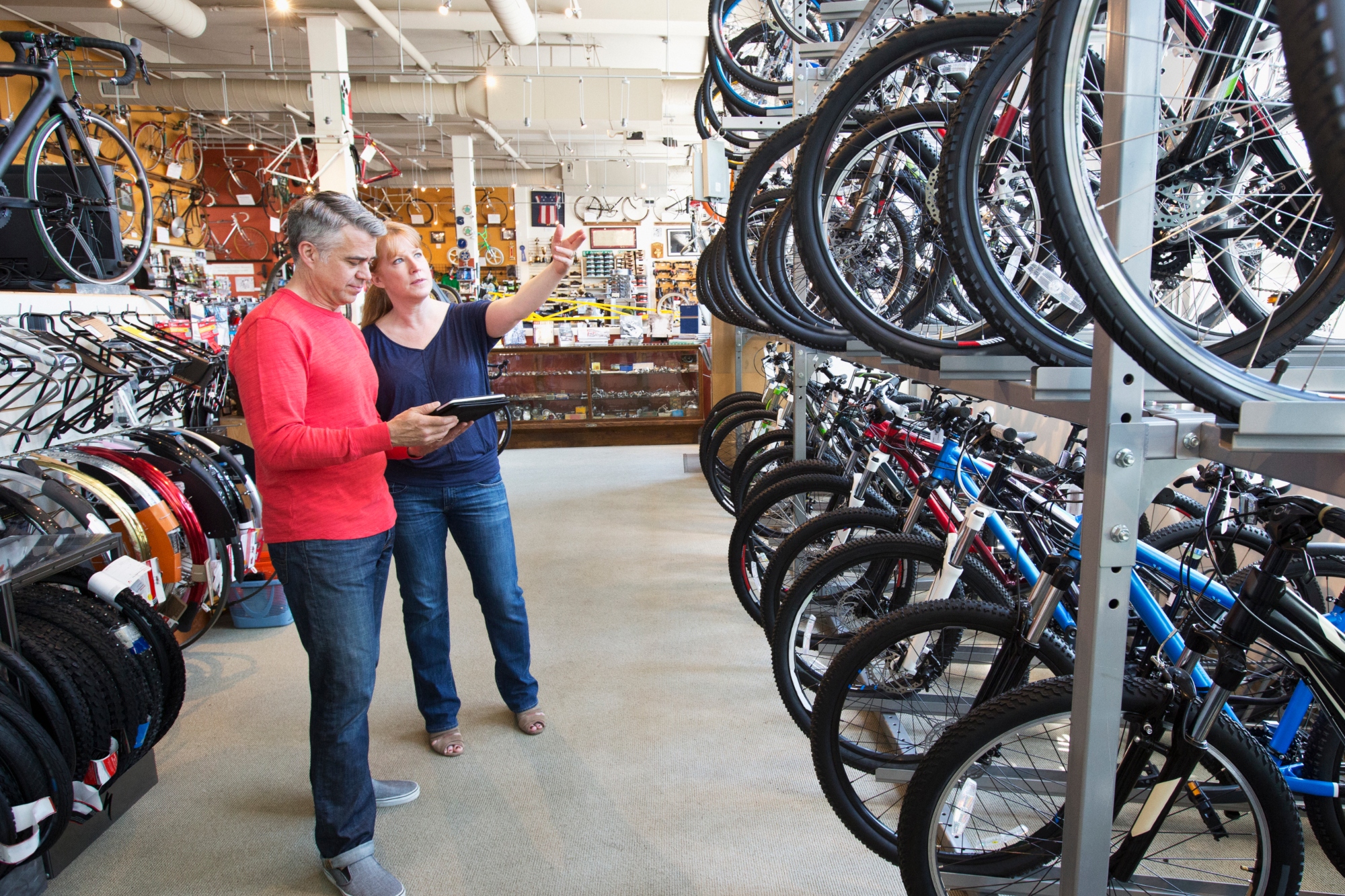
This article has been freshly updated as part of our 'New to Riding' week, running from March 10 to March 17, with a special focus on tips, tricks and inspiration for new riders.
The Cycle to Work Scheme is a UK government initiative started in 1999 designed to encourage more people to commute via bicycle. It allows employees to purchase bikes and accessories through salary sacrifice, which means the bike is paid for from your pre-tax salary, resulting in savings of up to 42%. It was once the case that the scheme was capped at £1000, which limited people to entry-level bikes. But now, the government has expanded the scheme and made it possible to get whatever bike, component or kit you like under the new guidelines. This includes electric bikes. In the last update to the scheme in 2019 the UK Government stated that Cycle to Work schemes “has involved over 40,000 employers across the country and has contributed to helping more than 1.6 million commuters cycle to work.”
How do I access the Cycle to Work scheme?
To access the Cycle to Work Scheme, first, check if your employer is registered with a scheme provider as the scheme relies on your employer facilitating the purchase of bikes and accessories through salary sacrifice agreements. If they are not already registered you can encourage your employer to join by sharing with them the many benefits to employers, such as the savings on National Insurance contributions, employers can save up to 13.8% on National Insurance contributions for every employee who uses the scheme.
Once you have chosen your bike and know the final cost your employer needs to approve your application with the service provider, your employer pays for the bike and you receive a voucher, redemption code or Letter of Collection – depending on which provider is being used. This can be used in-store and even online with some retailers. The final cost of your bike is then deducted from your salary over a fixed term, usually 12 to 18 months.
Can I buy any bike on the Cycle to Work scheme?

While the scheme covers a wide range of bicycles and accessories, the specific options depend on your employer's provider and spending limit. Generally, it includes commuter bikes, electric bikes, and related safety gear. The scheme states that the bike should be used for commuting purposes 50% of the time, in practice there is no way of this being checked up on, a bike is defined as a bicycle, tricycle or cycle having four or more wheels, not being in any case a motor vehicle (Section 192(1) of the Road Traffic Act 1988 (c52)). Surprisingly the scheme says you can have two bikes if for instance a cycle is used at either end of a train journey between home and work, however, the government document does go on to say “both cycles should be used for commuting.”
How much can I save via the Cycle to Work scheme?
Savings through the Cycle to Work Scheme depend on your tax rate. Typically, basic-rate taxpayers can save around 32% while higher-rate taxpayers can save up to 42% on the cost of a bike and accessories, thanks to reductions in tax and National Insurance contributions. Most of the providers we have looked at have calculators online to show you exactly how much you can save.
What happens at the end of the Cycle to Work scheme?
The Cycle to Work scheme is a hire scheme, so at the end of the loan period, you won’t own the kit. At the end of the scheme, you usually have several options: you can return the bike, pay a fair market value to keep it or extend the rental agreement. The Ownership Fee will be due at the end of the Hire Period. This is to avoid tax liability and to ensure ownership of the bike is smoothly and effectively transferred to you. You may also be able to extend the loan agreement for another three years for a small refundable deposit of either 3% or 7% of the kit. You make no further payments during this period. At the end of the three years, you can either return the equipment and get your deposit back or keep the kit for no further cost. The specifics depend on your employer's scheme provider, so it's best to consult their guidelines for precise details.
What if I use the Cycle to Work scheme, then leave my employer?
If you leave your employer while the initial Cycle to Work salary sacrifice agreement is still in force, you’ll need to pay off the balance and usually the depreciated value of the bike too, if you want to keep it. You have the option to give it back to your ex-employer too. Depending on your scheme provider, you may be able to transfer your agreement to your new place of work.
Can I get a bike via the Cycle to Work scheme if I am self-employed?

You cannot make use of the Cycle to Work scheme unless you are paid on the PAYE scheme so this rules out those who are self-employed, however, a bike is an allowable business expense both for running costs and the actual purchase of the bike if you are using it as your company vehicle. Speak to your accountant to be sure that you are purchasing your bike in the right way.
What providers are available for the Cycle to Work scheme?
There are several providers for the Cycle to Work Scheme, with popular ones including Cycle Scheme, Bike2Work Scheme, and Green Commute Initiative. Each provider may offer different terms, if you are an employer looking to join a scheme it's worth comparing them to find the best fit for your needs. Consider also the needs of the bike shop you are purchasing from, some bike shops are finding it increasingly difficult to make money from the scheme because of the high commission rates from some of the scheme providers.
Paul Vousden, owner of Mapdec Cycle Works in Kendal, specialises in creating custom bikes, “Cycle to Work is an excellent scheme in many ways. We have been doing an increasing number of custom-built bikes which helps customers maximise the bike they are getting for the money and prevents wastage as there is no need to swap out items like saddles or handle-bars for customers to get exactly the bike they need.” However, using the Cycle to Work scheme vouchers can reduce the profit a shop can make on a bike, “customers don’t always realise that some of the cycle-to-work scheme take a commission, and what’s more we aren’t supposed to talk about it. We often end up with very tight margins, particularly if we price matching on groupsets or components.”
Mapdec say that to get all the tax benefits of using your Cycle to Work voucher on discounted and price-matched products they need to upcharge by a typical 10% to cover the commission. Legacy options such as Cyclescheme, Cycle Solutions and Halfords Cycle2Work, charge commissions of up to 10%. Also, since September 2024 bike shops are no longer forced to accept Cycle to Work vouchers for products that are already discounted.
There are now schemes that take less commission, Gogeta recently became the only scheme provider to be endorsed by the Association of Cycle Traders [ACT] as it only takes a 3% commission in a bid to provide a fairer Cycle to Work scheme that benefits everyone.
If you have any influence over the scheme your workplace chooses to use then consider encouraging them to use one which benefits retailers as well as the users of the scheme.
Where can you use your Cycle to Work scheme vouchers?

Your local and independent bike shop is one of the best places to use your Cycle to Work scheme voucher as they will be able to help you choose the bike that is best for your needs and support you with ongoing servicing.
Celebrating 25 years of the Cycle to Work scheme
The Association of Cycle Traders (ACT) and Cycle to Work Alliance issued a joint statement last year to celebrate 25 years of the Cycle to Work scheme and look at ways to improve it for all involved. They aim to unlock the scheme for those on low incomes, National Minimum Wage and the self-employed to ensure equitable access to cycling, and working with the government and industry to simplify and minimise administrative barriers, making it easy and attractive for organisations to offer and employees to utilise the scheme. These ambitions will hopefully make cycling even more equitable and result in more people benefiting from the scheme.







